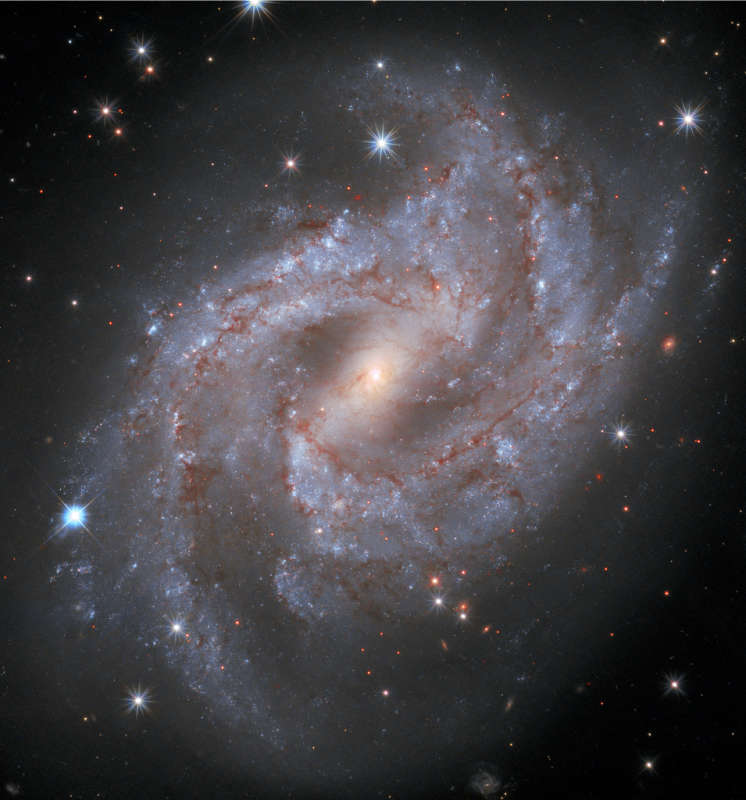Credit & Copyright: NASA,
ESA,
A. Riess (STScI/JHU)
and the SH0ES team
Acknowledgment: M. Zamani (ESA/Hubble)
Explanation:
Big, beautiful, barred
spiral
galaxy NGC 2525 lies
70 million light-years from the Milky Way.
It shines in Earth's night sky within the boundaries
of the southern constellation Puppis.
About 60,000 light-years across, its spiral arms lined with
dark dust clouds, massive blue stars, and pinkish starforming regions
wind through this gorgeous Hubble Space Telescope snapshot.
Spotted on the outskirts of NGC 2525 in January 2018, supernova SN 2018gv
is the brightest star in the frame at the lower left.
In time-lapse,
a year long series of
Hubble
observations followed
the stellar explosion,
the nuclear detonation of a white dwarf star triggered by accreting material
from a companion star,
as it slowly faded from view.
Identified as a
Type Ia supernova,
its brightness is considered a cosmic
standard
candle.
Type Ia supernovae are used to measure distances to galaxies and determine the
expansion
rate of the Universe.
Acknowledgment: M. Zamani (ESA/Hubble)
1999 2000 2001 2002 2003 2004 2005 2006 2007 2008 2009 2010 2011 2012 2013 2014 2015 2016 2017 2018 2019 2020 2021 2022 2023 2024 2025 |
Yanvar' Fevral' Mart Aprel' Mai Iyun' Iyul' Avgust Sentyabr' Oktyabr' Noyabr' Dekabr' |
NASA Web Site Statements, Warnings, and Disclaimers
NASA Official: Jay Norris. Specific rights apply.
A service of: LHEA at NASA / GSFC
& Michigan Tech. U.
|
Publikacii s klyuchevymi slovami:
spiral galaxy - supernova - Sverhnovye - spiral'naya galaktika
Publikacii so slovami: spiral galaxy - supernova - Sverhnovye - spiral'naya galaktika | |
Sm. takzhe:
Vse publikacii na tu zhe temu >> | |
Mneniya chitatelei [15]
